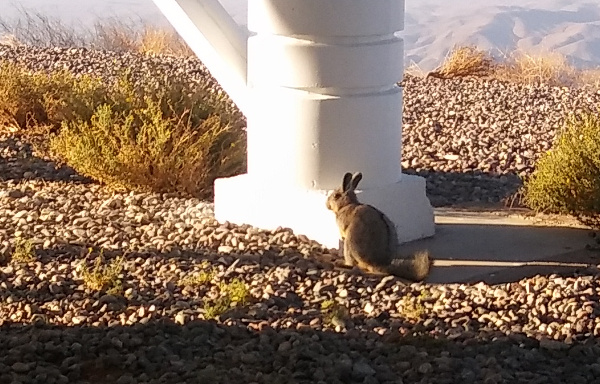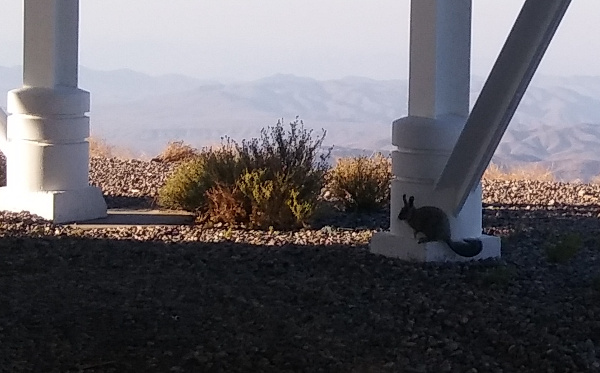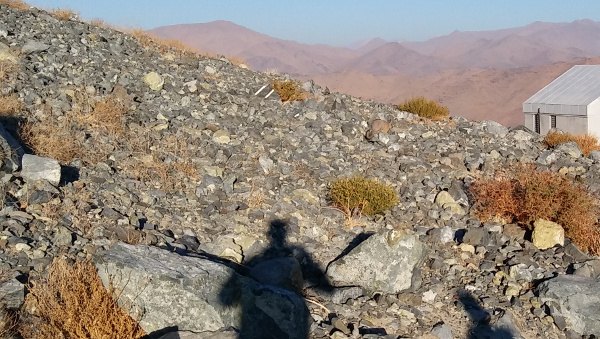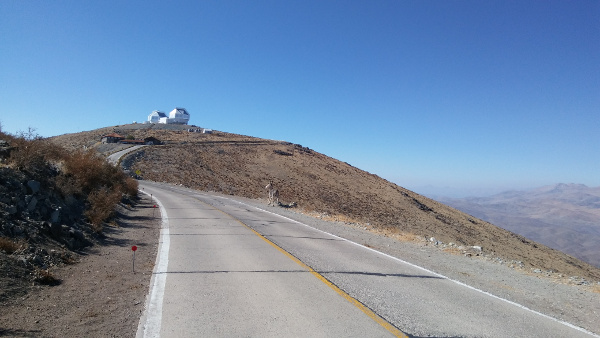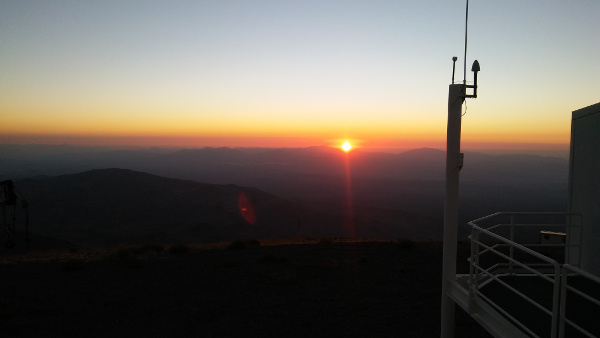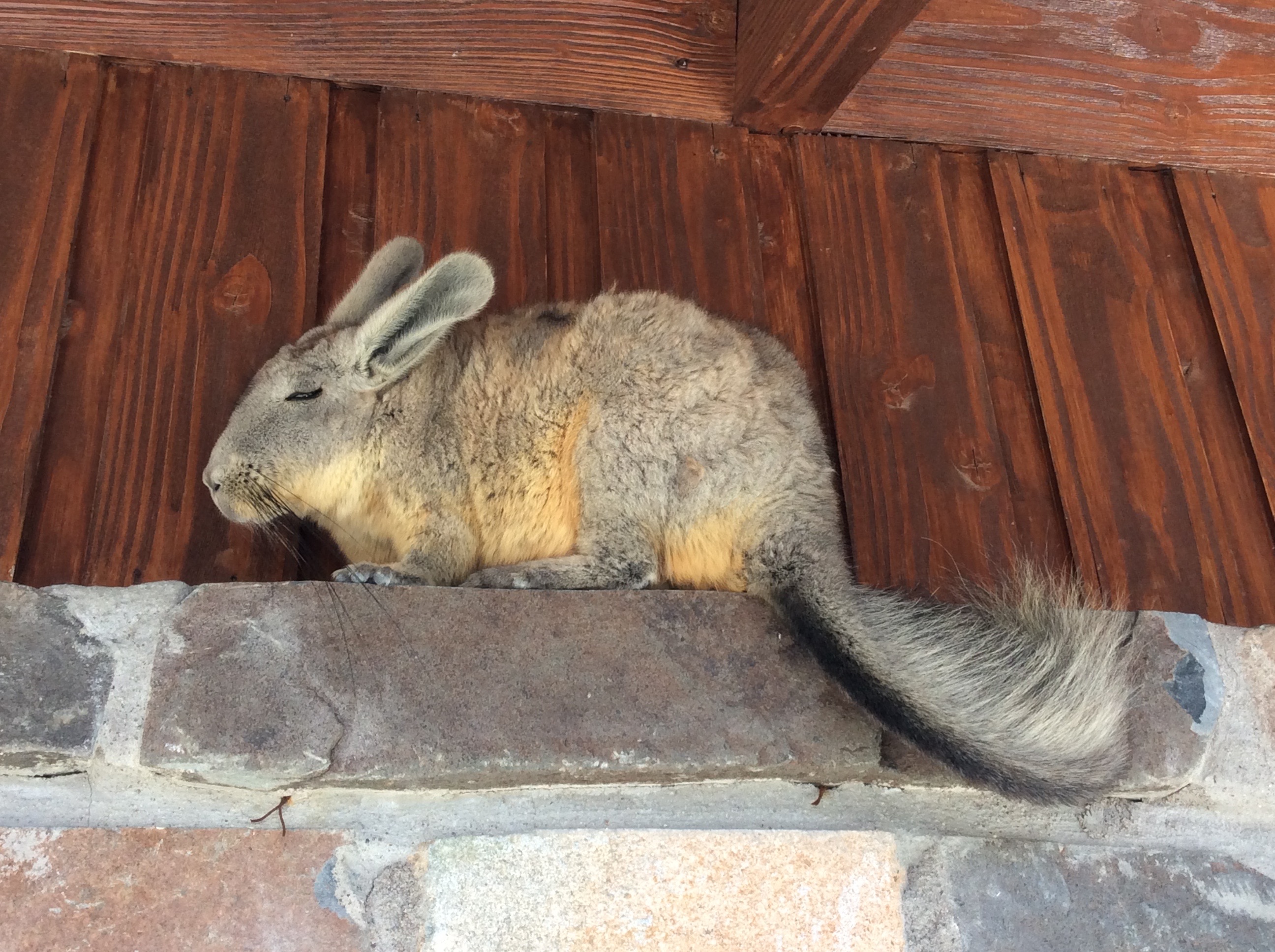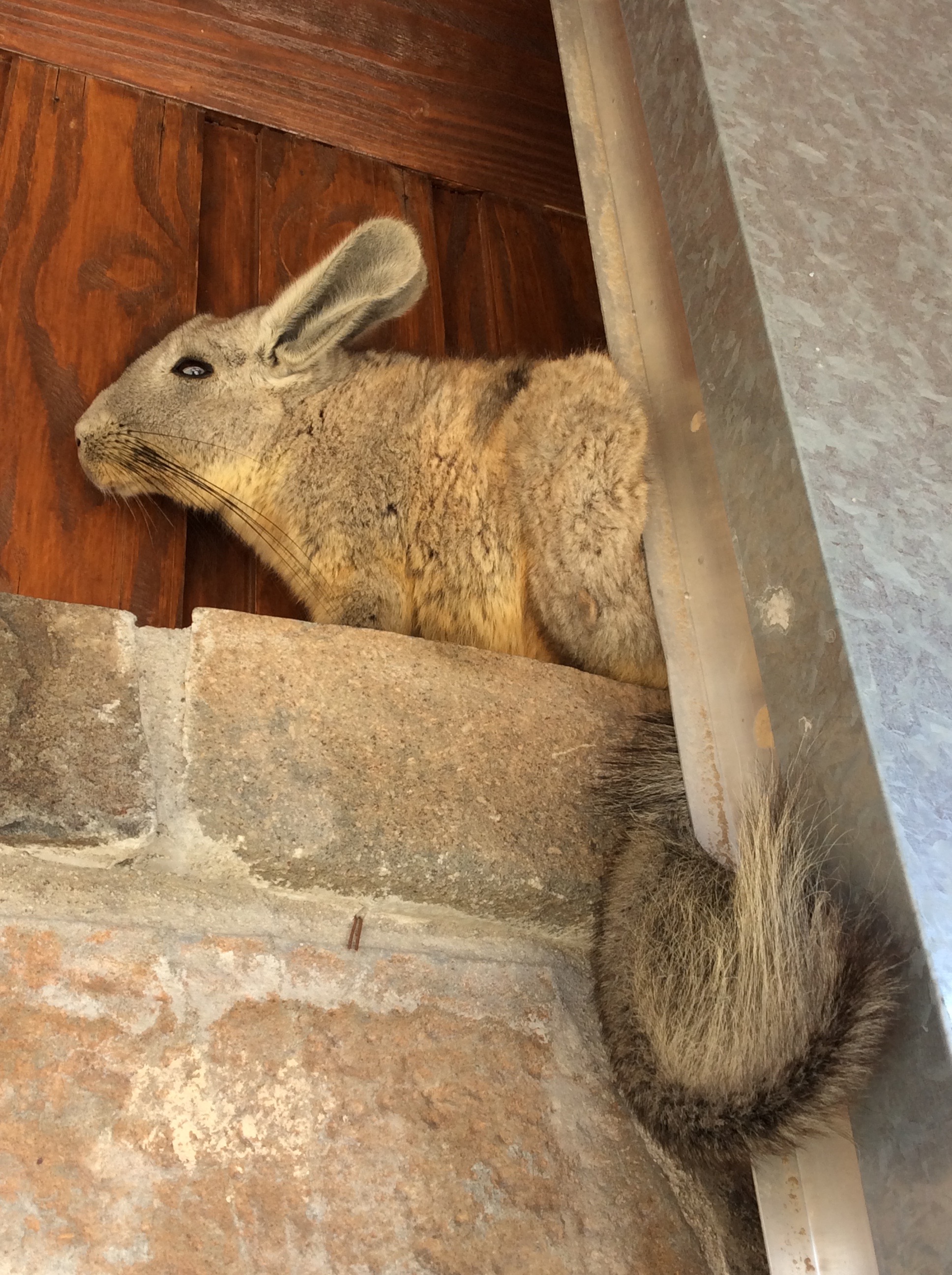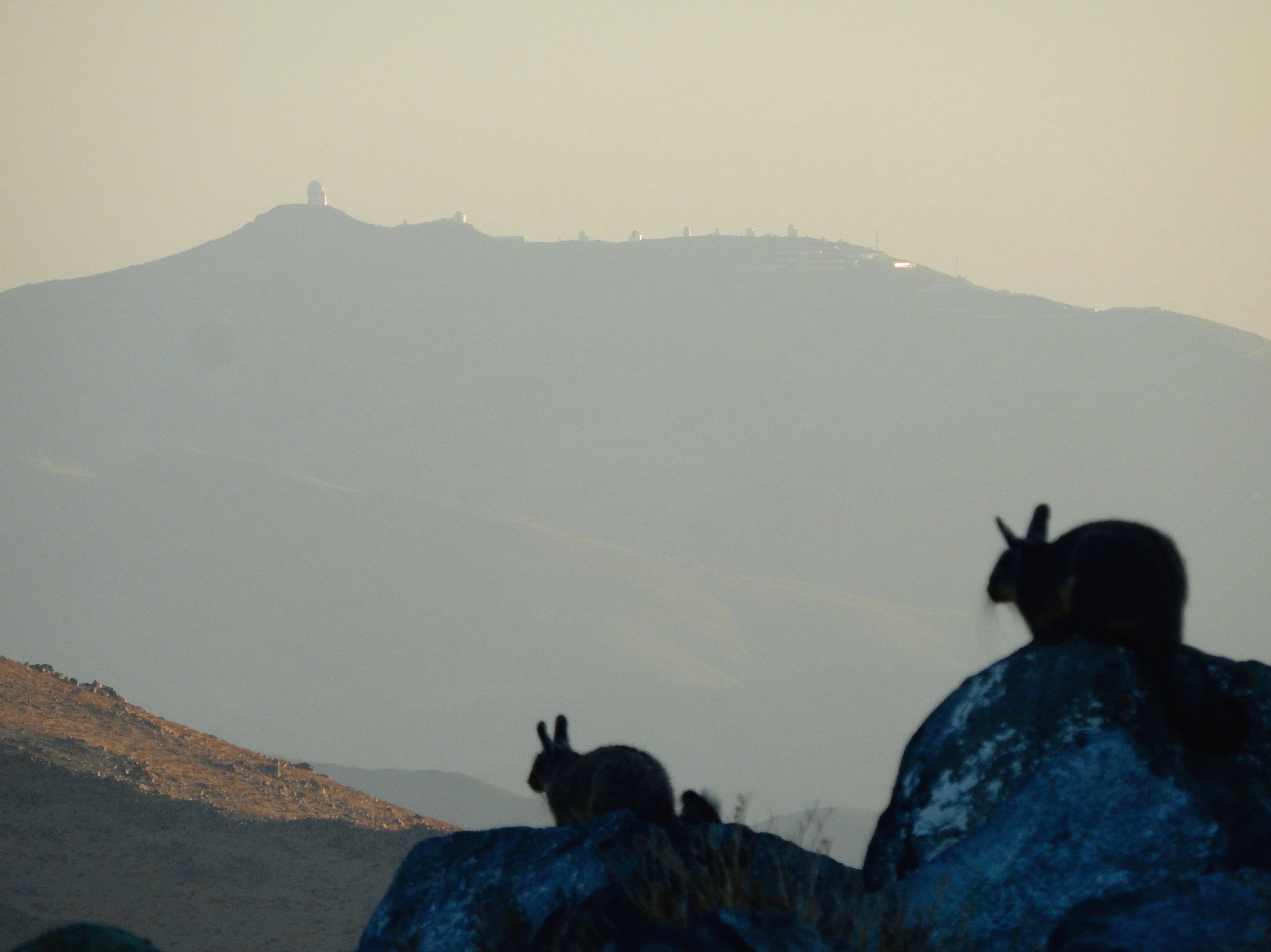Who’s up for a little troubleshooting?
Blog
2017A Day 10: We Collaborate with Order and Workplace
It’s great to be back at LCO after a 15 month drought from observing here. That’s the longest I’ve gone without being here since 2009! All the same great people are still here, and it’s a pleasure to be back working with the staff and MagAO team. If you’re wondering about the title of the post, it’s from a new sign in the Clay Telescope kitchen that seems to have to do with making sure not to steal the dishes. Maybe it reads less like an edict from a communist authoritarian government in Spanish (“Colaboremos con el orden y trabajo”).
Tonight started with a unimpressive, as in barely noticeable, penumbral Lunar eclipse, but a nevertheless beautiful Moon-rise. The Moon is an astronomical object that my little thermal IR camera can detect for sure. On the other hand, Jared and I are considering writing our own FLIR control software for observing alpha Cen.
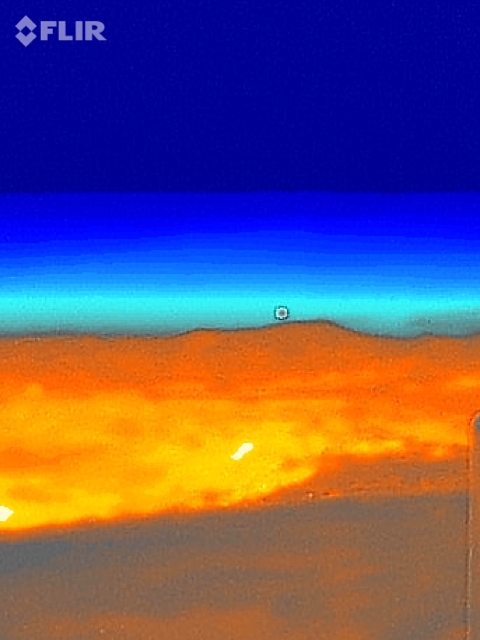
This afternoon I did Google Hangouts with both of my sons’ science classes. I think there was only one question asked by both sets of kids, and it was how much it cost to build Magellan. The best question I got was, “What is the most surprising thing you’ve ever found at the telescope?” I love the question, but I didn’t have the heart to explain how many hours of data reduction go into discoveries after leaving the telescope. Unfortunately, the slow internet connection we’ve had here meant they didn’t get to fully appreciate the video show that Mauricio put on as he slewed the telescope for them.
Speaking of Mauricio, here’s a cool (pun intended) picture of him washing the Clay primary with CO2 yesterday, in the IR, of course.
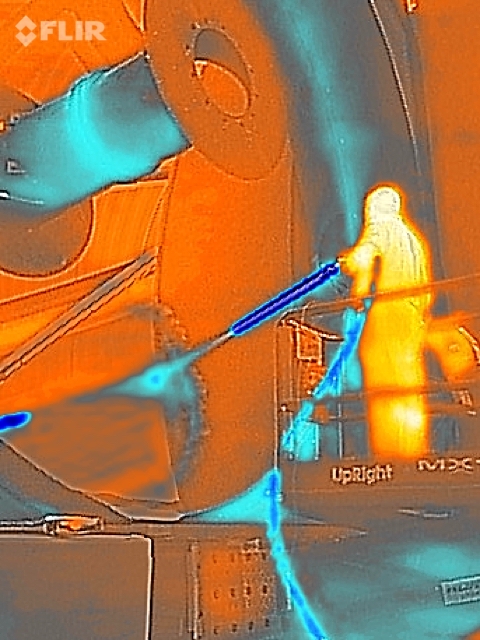
I saw two vizcachas at the ASB this afternoon and four vizcachas out behind the telescope tonight. You want to see IR photos of a vizcacha, you say? Why, of course you do.
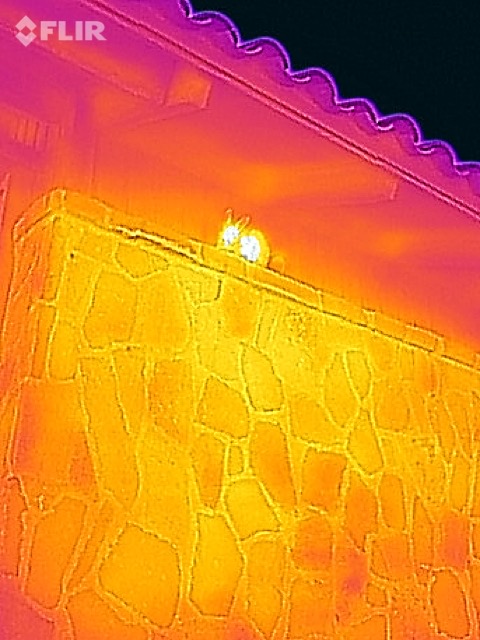
The internet is not letting me post pictures or YouTube videos. So here are some lyrics for Rock Lobster by the B-52s:
Here comes a stingray
There goes a manta-ray
In walked a jelly fish
There goes a dog-fish
Chased by a cat-fish
In flew a sea robin
Watch out for that piranha
There goes a narwhal
Here comes a bikini whale!
Oooh, wait, some bits are getting through finally…
2017A Day 9: 10um
Alycia arrived yesterday and today was her first night. She brought a 10-micron camera to do some thermal imaging, including these pictures of me:
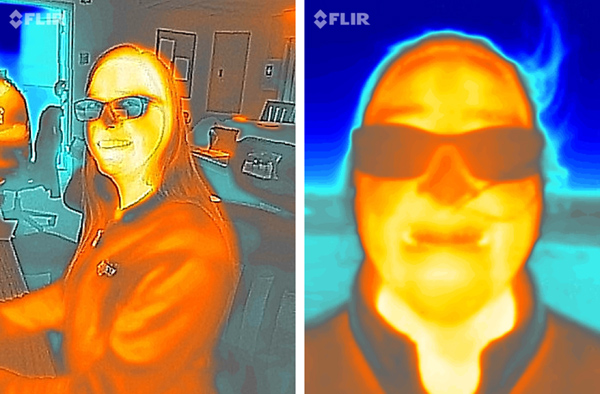
Tonight went smoothly other than a brief power outage which meant Mauricio had to go turn the compressor back on. He also brought us some cake from Chef Andres!
From last night which was not so smooth, here is a picture of Jared and Laird going up on the scissor lift to replace the failed DSP board in the ASM:
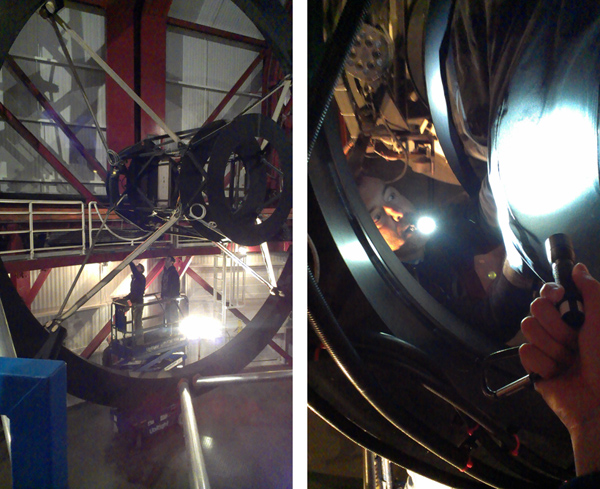
Seeing last night just after recovering from the failed DSP:
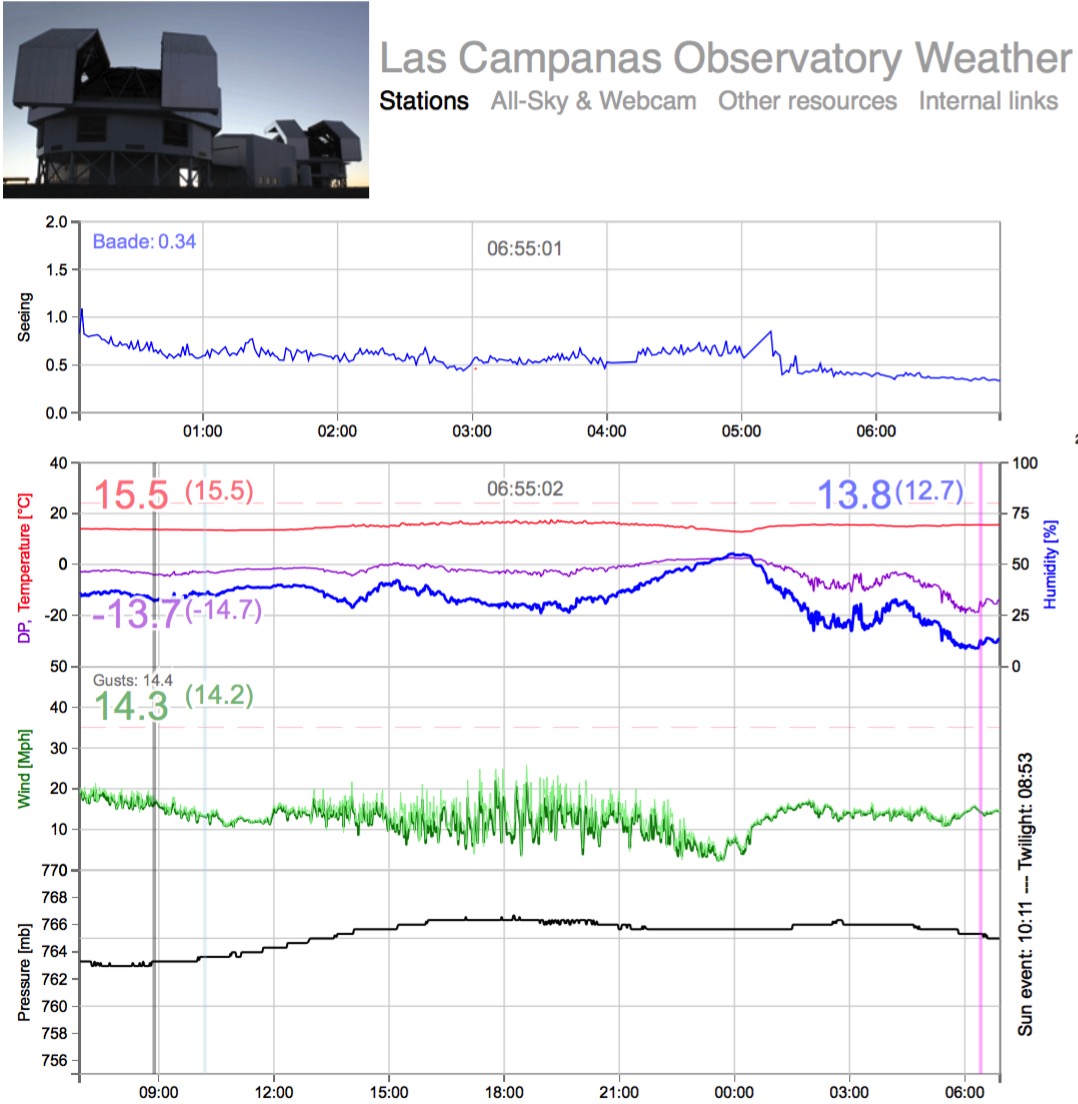
Tonight was Ya-Lin’s last night. We’ve enjoyed having his help, his great vizzy photos, and his … interesting … song choice. Kind of like this one:
2017A Day 8: Vizzy day
It has been a busy day. We were searching for planets hidden in young disks but suddenly got attacked by another DSP board failure. Luckily we quickly fixed the problem and closed the loop at an amazing 0.35 arcsecond seeing. Wonderful night.
Let’s relax and see some viscachas.
I find this song quite interesting:
2017A Day 7: Day 7
Astronomy happened. Stars were involved.
